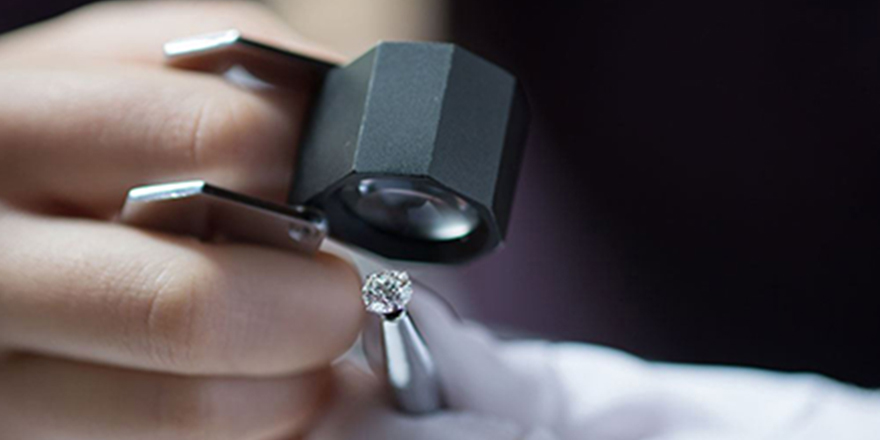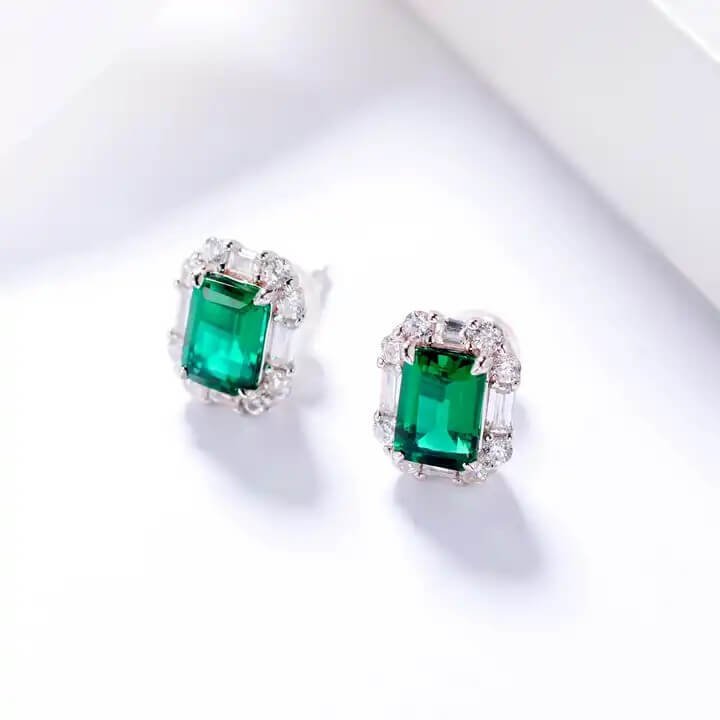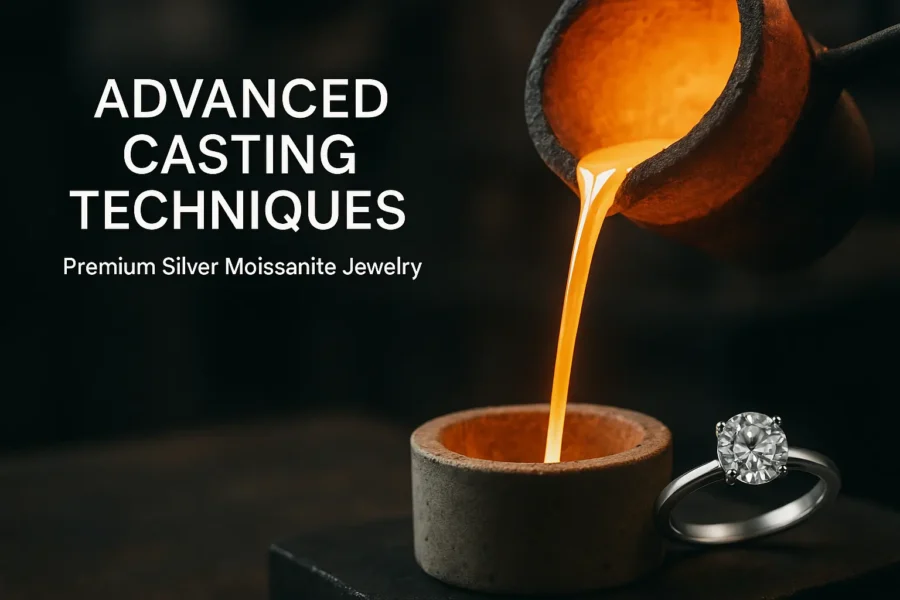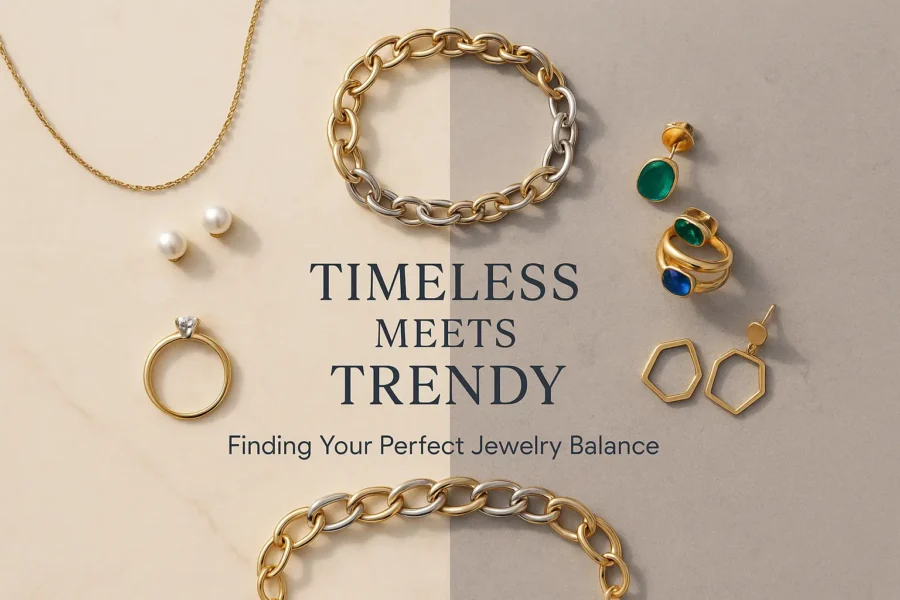WHAT IS A VVS DIAMOND?
Natural diamonds and lab-grown diamonds are valued and ranked based on cut, color, carat, and clarity (also known as the 4C’s). Fire and brightness are determined by the cut, and weight is determined by the carat, and color determines the color of a diamond.
However, clarity refers that how clear the diamond is means characteristics of diamond clarity. Clarity grades are determined supported by the number of scratches, state orbits of mineral deposits on the surface of or at intervals a diamond.
VVS diamonds are acknowledged to be one in all the very best marks of diamonds in terms of clarity, however what precisely are these bright stones?
In this article, we will look closely at VVS diamond grade;
The Clarity Grading Scale
A clarity grading scale ranges from flawless (FL) to included (I) clarity. A flawless stone FL has no inclusions or surface imperfections, whereas enclosed I stones have inclusions visible to the eye. The diamond’s inclusions increase with each step down the scale. The following table shows the grades for various levels of clarity.
| Flawless | Internally Flawless | VVS1 | VVS2 | VS1 | VS2 | SI1 | SI2 | I1 | I2 | I3 |
What Is VVS Diamond Clarity?
VVS means very very slightly included, which visualizes diamond clarity and appearance. Diamonds with VVS (very very slightly) clarity have a tiny flaw within the diamond that is even difficult to identify under 10x magnification. In the VVS diamond clarity, there are two categories: VVS1 and VVS2. The difference between these two categories is that VVS2 has more than one inclusion in it while VVS1 does not. But to the naked eye, you cant differentiate between these two.
The Basics Of VVS Diamonds
VVS, or very very faintly enclosed, diamonds have tiny inclusions that are faint to the human eye. In fact, these inclusions are thus tiny that they’re troublesome to check even with 10x magnification. VVS diamonds are usually divided into VVS1 and VVS2 child categories. Though the variations between these 2 subcategories are invisible to the human eye, they’re determined by the positioning of the inclusions. VVS1 diamonds have inclusions closer to the sting of the stone, and VVS2 inclusions are toward the middle. As a result of VVS1 inclusions being tougher to identify, these diamonds are thought to be faintly higher on the clarity scale than VVS2 diamonds.



VVS DIAMONDS COME IN TWO TYPES: VVS1 AND VVS2
As mentioned above VVS diamonds come into two category VVS1 and VVS2, now, we will discuss how they are graded. There are many factors that affect diamond clarity that including the number of inclusions present in a diamond, inclusion size, and position of inclusion.
How GIA Grade VVS Diamond Clarity
| Factor Affecting Clarity Grade | Meaning | VVS1 | VVS2 |
| NUMBER OF INCLUSIONS | The individual imperfections within a diamond are called “inclusions”.
The number of inclusions in a VVS diamond can vary but is most common. |
1-2 Inclusions; that are not visible to the naked eye. | 1-5 Inclusions; that may be seen under magnification. |
| INCLUSIONS SIZE | Inclusions within a VVS diamond are microscopic, VVS1/2 diamonds are differentiated by how difficult they are to spot under 10x magnification | There are very small size inclusions that are not Visible. | The inclusions are barely visible. |
| INCLUSIONS LOCATION | The locations of any inclusions affect how visible they are (with imperfections near the top of the stone being the easiest to spot) which in turn affects their clarity grade. |  It has small inclusions on the stone’s edge and the pavilion that cannot be seen. It has small inclusions on the stone’s edge and the pavilion that cannot be seen. |
 Inclusions may be visible in the center of the stone and on the crown. Inclusions may be visible in the center of the stone and on the crown. |
Types Of Inclusions
When diamonds are formed naturally or in a laboratory, they develop certain birthmarks known as inclusions or clarity characteristics. They may or may not be noticeable to the naked eye, depending on the cut, color, and carat of a diamond. Well, different types of inclusions have a different visual impact on a diamond clarity grade.
Here we will discuss some common type of inclusion that is found inside a VVS diamond.
Common inclusions on VVS diamonds include;
| Types of Inclusion & Blemishes | Meaning | VVS1 | VVS2 |
| PINPOINT | These are very small crystals with black and white tints found inside diamonds. | |
|
| NATURAL | It is usually a rough part of a diamond left untouched during polishing, which can be found on the girdle. | |
|
| INTERNAL GRAINING | It creates some small faint lines that appear milky and hazy because of irregular crystal growth. | |
|
| TAINT CLOUDS | It is a group of tiny pinpoints found inside the diamond. A diamond may appear cloudy due to clouds’ taint. | |
|
| FEATHER AND CHIP | Feather is a small crack in the diamond that can cause a durability issue. And the chips are caused by accidental knocks and are usually found on the girdle. | |
|
Why Choose A VVS Diamond?
To the naked eye, VVS diamonds seem to be flawless, but they’re much less expensive than a real flawless diamond. This implies that customers buying VVS diamonds can get the design of a flawless stone, but not the associated price tag. Besides, flawless diamonds are improbably rare, thus though you’ve got the budget to afford this grade, you’ll not be able to find a flawless stone that meets your carat, color, and cut needs. For this reason, VVS diamonds are generally the best choice for purchasers looking for a visually excellent diamond.
What To Look For When Purchasing VVS Diamond ?
There are many things you should consider when purchasing VVS diamonds. First, you have to decide your budget and for what purpose you are buying, for example; If you are buying a diamond for a ring you can get VVS1, and if you want for some other jewelry you can choose VVS2. You can either choose VVS1 or VVS2 depending on your budget. If your budget is low you can also choose a VVS2 diamond ring because no one can differentiate them by just looking at them. There are also some other factors that you should look at when buying a VVS diamond.
Cut Quality
A diamond’s cut determines its light and fire performance. A diamond’s cut quality is related to the number of facets. The more facets a diamond has, the more it costs. This factor is important when purchasing VVS diamonds because regardless of which clarity grade you choose, a lower-cut diamond can appear dull. However, you can choose a lower clarity grade if the cut is ideal. Diamond prices vary considerably between VVS diamonds and the quality of their cuts often plays a role.
Cost Of VVS Diamonds
The cost of a diamond is determined by its 4cs. Well, the price of VVS diamonds is much less as compared with IF diamonds. There are still many differences in the prices of VVS diamonds. For example; poor cut diamonds with lower color and carat VVS diamonds may cost you less than an ideal cut diamond with good color, larger carat VVS diamonds. So, always check out the diamond’s cut, color, and carat before choosing a diamond.
Here is the list of VVS diamonds prices from where you can check depending on your budget. VVS diamond cost also depends on VVS1 or VVS2; generally, VVS1 diamond costs more than VVS2 diamond clarity.
VVS1 Diamond

VVS1 diamond is considered one of the best clarity of diamonds. It means that there are no visible imperfections and the diamond looks like a perfect flawless stone. The price of these diamonds varies according to their size, shape, and color. Normally, VVS1 diamond prices start from $1,136 for an ideal cut half-carat diamond. But it has its own pros and cons that we will discuss next.
Pros; They have the same appearance as internally flawless diamonds, and they are more affordable as compared with them.
Cons; They are more expensive as compared to VVS2 diamonds and have the same look. They are also extremely difficult to distinguish by the naked eye.
VVS2 Diamond
VVS2 diamond is another popular type of clarity grade. These diamonds are slightly different from VVS1 diamonds. They usually have fewer than 10% of internal flaws. And their prices are much less than VVS1 diamonds.
Pros; They are much less expensive than IF and VVS2, and they are readily available.
Cons; The inclusion and flaws may be visible to the naked eye.
Difference Between VVS1 And VVS2
VVS1 and VVS2 are two types of clarity grades of diamonds. Both of them are very similar but differ in terms of their price and some number of inclusions. Generally, VVS2 diamonds are cheaper than VVS1 diamonds, however, they are not that easy to identify they are almost identical and can be only identified under 10x magnification.
Where Are You Able To Obtain VVS Diamond?
Most jewelers can carry diamonds from across the whole clarity scale with the exception of flawless and internally flawless stones. Finegrown diamonds permit customers to look for diamonds supported by any of the 4C’s. If you’re on the seek for VVS diamonds, the loose diamond search could be a great spot to start out.
Remember, the VVS grade solely refers to the clarity of the stone. once shopping for a diamond, it’s vital to contemplate all of the C’s, not simply clarity. make sure to issue cut, color and carat into your call before making a purchase!
What Is VS Diamond Clarity?
A VS is very slightly included, they are divided into two parts; VS1 and VS2. They are much cheaper than IF, VVS1, And VVS2. Sometimes they may have visible inclusion and flaw to the naked eyes. VS1 and VS2 are the most affordable and common clarity grades. You can choose VS1 diamond clarity because they are affordable than VVS1 or VVS2 and they do not have too many visible flaws. If you don’t want to spend too much money then you must go for VS1 or VS2 without compromising the beauty.
Difference Between VVS And VS Clarity Grade
The main difference between VVS and VS is the size and number of inclusion in the diamond. In terms of inclusions, VVS diamonds are better than VS diamonds because VVS diamonds have smaller and less visible inclusion, while VS diamonds have inclusion visible under magnification. And in terms of price, VS clarity is much cheaper than VVS clarity.
| VVS Diamonds | VS Diamonds |
| VVS diamonds have small and less visible inclusion and flaws. | VS diamonds have larger and more visible inclusion. |
| VVS diamonds are more expensive than VS but less than F and IF clarity. | VS diamonds are less expensive than VVS, F, and IF clarity. |
| The inclusions are difficult to find even under 10x magnification. | The inclusions are easily identified under magnification. |
| Inclusions are not visible to the naked eye. | Very small and tiny inclusions are visible to the naked eye. |
Cost Of VS Diamond Clarity
As mentioned above a diamond’s cost is depends on its cut, color, and carat. Generally, VS1 clarity grade diamonds range from $6000 to $15,000 per carat, depending on the color and cut quality. And VS2 clarity grade diamond is priced around $5000-$12,000 depending on its cut, carat, and color.
Final Thoughts
Boost your business with MinyeJwelry. We are committed to being the largest jewelry store. Whether you need customized or ready-made products, we have our own designers cunban link chains, rings, bracelets styles. A variety of styles to choose from, become a partner with MinyeJwelry and create wealth together






